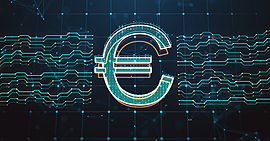You can bank safely online at home
20/03/2020
During the quarantine it is advisable for you to use your bank’s online services to manage your financial matters as a preventive measure, even if it is still possible to go to bank branches that remain open and operational. Would you like to operate with your bank account and shop on the internet safely? If you have a computer at home, you can.
Online banking allows you to access bank services 24/7 from your computer, tablet or mobile phone. You have to sign a contract first. Pay attention to the terms and conditions, but normally you should be able to carry out your usual transactions free of charge: checking your balance, performing transactions, managing bills and even buying products.
That fact that you operate from a distance does not limit your rights as a consumer. The bank is obliged to provide you with the pre-contractual and contractual information where appropriate. Operating online is fast and easy, but this should not lead you take decisions in haste. Thanks to technology, it is easy to compare the conditions for the different products and services in the market.
Remember that in order to avoid risks when using your passwords you should:
- Beware of e-mails and messages that do not come from a reliable source.
- Never send your passwords via e-mail or share them in social networks.
- Do not share confidential data with anybody.
- Change your signature key regularly.
As regards electronic payments, the current PSD2 regulation establishes protective measures, requiring enhanced authentication from users. Up to now, when you shopped online, it was usually only necessary to give your card number, expiration date and CVV (card verification value, on the back of your card). However, these elements are no longer sufficient in terms of security.
Authentication is used to check the identity of a user who is making a payment. It aims to verify that the persons who pay are the persons they say they are. Enhanced authentication also requires the use of at least two different data to prove your identity and reduce the risk of fraud. They are called authentication factors, must be independent of each other and may consist of something that:
- you know (a password or a PIN).
- you have (a card, a mobile device, a one-time password (OTP); etc.
- you are or is inherent to you (your fingerprint, iris, etc.).



